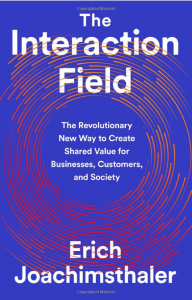
Book: The Interaction Field
In “The Interaction Field,” Vivaldi CEO and professor Erich Joachimsthaler explains that the only way to thrive in this environment is through the Interaction Field model. Companies who embrace this model generate, facilitate, and benefit from data exchanges among multiple people and groups–from customers and stakeholders, but also from those you wouldn’t expect to be in the mix, like suppliers, software developers, regulators, and even competitors. And everyone in the field works together to solve big, industry-wide, or complex and unpredictable societal problems.










